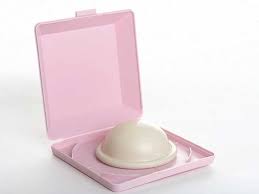When it comes to contraception, the pill, condoms, and IUDs often steal the spotlight. But let’s talk about the diaphragm—a safe, hormone-free, and reusable birth control method that deserves more attention! If you’re looking for a contraceptive option that puts you in control, the diaphragm might be worth considering. Here’s everything you need to know about this underrated contraceptive.
What is a Diaphragm?
A diaphragm is a soft, flexible, dome-shaped device made of silicone that is inserted into the vagina before intercourse to cover the cervix and prevent sperm from reaching the egg. It’s used in combination with spermicide for maximum effectiveness.
Why Choose a Diaphragm?
✔ Hormone-Free – Ideal for those who prefer non-hormonal contraception. ✔ Reusable – A single diaphragm can last up to two years with proper care. ✔ Inserted Before Sex – Allows for spontaneity since it can be placed hours in advance. ✔ User-Controlled – You’re in charge of when and how you use it. ✔ No Long-Term Effects – Fertility returns immediately after discontinuing use.
How to Use a Diaphragm Correctly
- Get the Right Fit – A healthcare provider will help you find the correct size for maximum protection.
- Apply Spermicide – Coat the inner side of the diaphragm with spermicide before insertion.
- Insert Properly – Fold the diaphragm in half, push it into the vagina, and position it to cover the cervix.
- Check Placement – Run a finger around the edge to ensure it’s covering the cervix properly.
- Leave in Place for at Least 6 Hours – This allows spermicide to work effectively. Do not remove before this time.
- Remove and Clean – After at least 6 hours (but no more than 24), remove the diaphragm, wash it with mild soap and water, and store it in a dry case.
Common Myths About the Diaphragm
🚫 “It’s uncomfortable.” When fitted and inserted correctly, you shouldn’t feel it at all. 🚫 “It’s not effective.” When used correctly with spermicide, it’s about 88% effective. 🚫 “It’s difficult to use.” Like tampons, it just takes a little practice to get used to inserting and removing it. 🚫 “It protects against STIs.” Unfortunately, diaphragms do not prevent sexually transmitted infections, so pairing them with condoms is a good idea.
Final Thoughts
The diaphragm is a great option for those looking for a non-hormonal, reusable contraceptive that offers flexibility and control. While it may not be as widely used as some other methods, it’s definitely worth considering if you’re seeking an alternative to hormonal birth control.
Curious if the diaphragm is right for you? Drop your questions in the comments—House of Gynaecologists is here to help!

